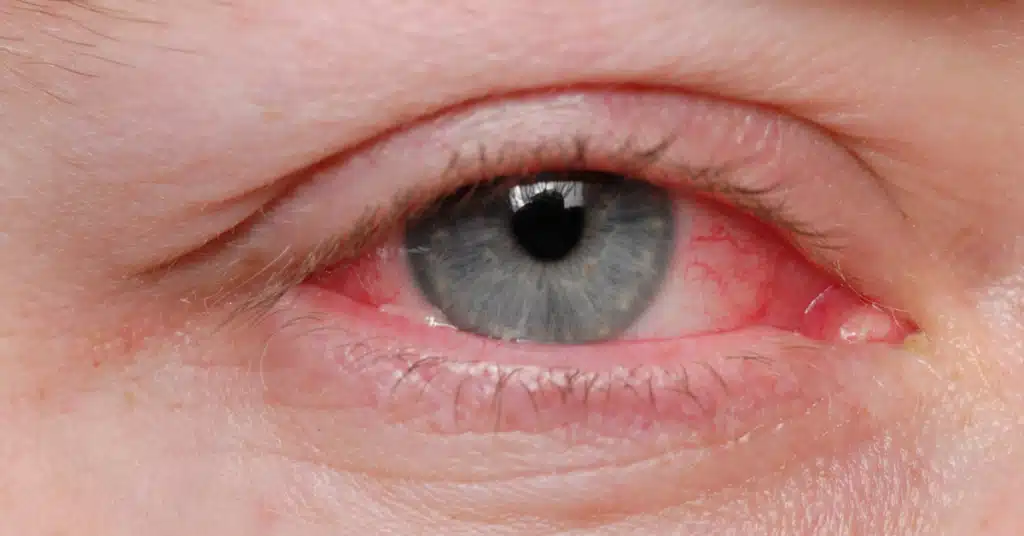Glaucoma Red Eye: Understanding the Symptom
Glaucoma is a serious eye condition that often remains silent until it reaches an advanced stage.
Among its various manifestations, one of the striking symptoms is the occurrence of a red eye.
Glaucoma-induced redness can indicate increased intraocular pressure, leading to damage of the optic nerve and potentially irreversible vision loss.
This redness is not the result of external factors like allergies or infections but rather of elevated pressure within the eye.
Understanding the connection between Glaucoma red eyes is necessary for early detection and prompt intervention, as it can significantly impact an individual’s eye health and overall well-being.
Does Glaucoma cause red eyes
Red eyes are not often a primary symptom of Glaucoma.
Red eyes are not a typical or distinctive symptom of Glaucoma.
However, some people with the condition may experience it as a secondary or linked symptom.
Causes of red eyes
First, let’s examine benign causes to distinguish them from more serious ones when we delve into the discussion.
Allergies

Environmental or seasonal allergies, including reactions to triggers like pollen, pet dander, and cigarette smoke, Can result in eye redness and swelling of the eyes.
These allergic responses may also manifest as itching, a burning sensation, heightened tear production, and potentially involve non-eye-related symptoms.
Addressing these allergies is possible by using antihistamines, which are available either over-the-counter or by prescription.
Dry eyes
Tears are produced by glands above the eyes, which serve the essential functions of safeguarding and lubricating the eyes.
When there is insufficient tear production or a decrease in tear quality, it results in dry eye syndrome.
This condition can lead to symptoms such as redness, heightened sensitivity to light, and intermittent blurred vision.
Managing dry eye syndrome entails using lubricating eye drops or inserting a silicone plug into the tear duct located at the inner corner of the eye, a method employed to prevent excessive drainage of tears.
Switch to Eyemist E/D 10 ml from WowRx. Say goodbye to the dry days!
Subconjunctival hemorrhage
When a blood vessel within the eye ruptures, it has the potential to release blood onto the eye’s surface, resulting in a noticeable red appearance.
Despite its alarming appearance, such hemorrhages are frequently harmless and tend to resolve naturally within 1-2 weeks.
Serious causes of Glaucoma
Following are some of the serious causes of red eyes.
Conjunctivitis

When the thin membrane that covers the inner surfaces of your eyelids and the white portion of your eye becomes inflamed, this inflammation can result in the whites of your eyes.
This further takes on a pink or red appearance, commonly referred to as “pink eye.”
Various factors, including viral infections, bacterial infections, allergies, or exposure to environmental irritants, can trigger Conjunctivitis.
Suppose the cause of your conjunctivitis is a viral or bacterial infection.
In that case, it is crucial to note that this condition is highly contagious, and seeking medical attention is necessary for its resolution.
Blepharitis
Blepharitis is characterized by the inflammation of your eyelids, which can result in redness and swelling of your eyelids or your eyes.
This condition may develop when bacteria are abundant on your eyelids or if the oil glands within the eyelids become blocked.
Failure to treat Blepharitis can lead to more severe symptoms, such as eyelash loss, misaligned growth of eyelashes, or even blurred vision.
Uveitis
Uveitis refers to the inflammation of the uvea, which is the region between the white of your eye and your retina.
Besides causing redness in the eyes, uveitis can also result in symptoms such as blurred vision, pain, visual floaters, and sensitivity to light.
Uveitis can be attributed to various factors, including:
- Autoimmune diseases like lupus and rheumatoid arthritis.
- Specific types of infections, such as syphilis and shingles
- Certain cancers
- Herpes simplex virus (HSV) type 1
It is crucial to seek timely treatment for uveitis since the condition can lead to vision loss if not effectively managed.
Angle-closure Glaucoma
Glaucoma encompasses a group of conditions that elevate the pressure within your eye. This elevated pressure can harm your optic nerve, resulting in vision loss.
One specific form of Glaucoma is known as angle-closure Glaucoma.
In this condition, there is a swift escalation in eye pressure, leading to symptoms such as red eyes, severe pain, the appearance of halos around objects, headaches, and episodes of nausea or vomiting.
Angle-closure Glaucoma is a medical emergency requiring immediate treatment to prevent vision loss.
Also read: To manage your Glaucoma effectively, it’s crucial to understand the available treatments. Read this article on Understanding the Glaucoma Treatment Options to learn all about it
Conclusion
While red eyes are not a primary symptom of Glaucoma, they can sometimes be associated with this serious eye condition as a secondary or linked symptom.
It’s crucial to differentiate between benign causes of red eyes like allergies, dry eyes, subconjunctival hemorrhages, and more serious issues.
Timely diagnosis and treatment are essential for preserving eye health and preventing irreversible vision loss.
Regular eye check-ups and awareness of these potential causes of red eyes are vital in ensuring early detection and intervention for better overall well-being.
Frequently Asked Questions
Can Glaucoma cause red eyes?
Red eyes are not often a primary symptom of Glaucoma. But occasionally, especially in angle-closure Glaucoma, a sharp rise in pressure can cause redness, excruciating pain, and other symptoms that call for emergency medical attention.
What does a red eye mean Glaucoma?
In the initial stages of certain Glaucoma types, symptoms may remain silent. However, bloodshot eyes can serve as a crucial indicator, signaling the need for urgent medical attention in specific types of Glaucoma.
Can Glaucoma be cured?
Although there is no cure for Glaucoma, early detection and intervention can help preserve vision and prevent further loss. Taking proactive steps to safeguard your vision health remains paramount.
WowRx uses only high-quality sources while writing our articles. Please read our content information policy to know more about how we keep our content reliable and trustworthy.






